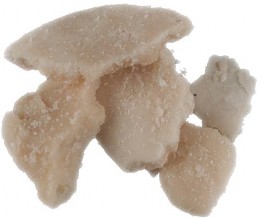3.4 Stimulants (an overview)
What are Stimulants?
Stimulants speed up the body’s systems. This class of drugs includes: methamphetamine and cocaine, prescription drugs such as amphetamines [Adderall and Dexedrine], and Methylphenidate [Concerta and Ritalin].
What is their origin?
Stimulants have a long and varied use throughout the world. For example, the leaves of the coca plant were chewed and coca chewing has a long history of Indigenous use in South American countries.[1] When cocaine was isloated from coca in 1859, widespread use became the norm in Canada; a medical publication in 1884 was even created to promote its benefits.[2]

What do they look like?
Stimulants come in the form of pills, powder, rocks, and injectable liquids.
How are they administered?
Stimulants can be pills or capsules that are swallowed. Smoking, snorting, or injecting stimulants produces a sudden sensation known as a “rush” or a “flash.” Substance use disorders reflect a pattern of “binge” use (sporadically consuming large doses of stimulants over a short period of time). Heavy use may include injecting every few hours, continuing until the supply is gone or a point of delirium, psychosis, and physical exhaustion is reached. During heavy use, all other interests often become secondary to recreating the initial euphoric rush.
What is their effect on the mind?
When used as part of a substance use disorder, stimulants are frequently taken to “get high” (produce a sense of exhilaration, enhance self-esteem, improve mental and physical performance, increase activity, reduce appetite, or extend wakefulness for a prolonged period). Chronic, high-dose use is frequently associated with agitation, hostility, panic, aggression, and suicidal or homicidal tendencies. Paranoia, sometimes accompanied by both auditory and visual hallucinations, may also occur. Tolerance, in which more and more of the substance is needed to produce the usual effects, can develop rapidly, and psychological dependence occurs. The strongest psychological dependence observed occurs with the more potent stimulants, such as amphetamine, methylphenidate, methamphetamine, cocaine, and methcathinone. Abrupt cessation is commonly followed by a “crash” (depression, anxiety, craving, and extreme fatigue).
What is their effect on the body?
Stimulants are sometimes referred to as uppers and reverse the effects of fatigue on both mental and physical tasks. Therapeutic levels of stimulants can produce exhilaration, extended wakefulness, and loss of appetite. These effects are greatly intensified when large doses of stimulants are taken. Taking too large a dose at one time or taking large doses over an extended period of time may cause such physical side effects as dizziness, tremors, headache, flushed skin, chest pain with palpitations, excessive sweating, vomiting, and abdominal cramps.
What is their legal status in Canada?
Stimulants are controlled under the CDSA as a Schedule I substance. Some prescription stimulants are not controlled (for example ephedrine can be found in some allergy and cold medicine) and some stimulants like tobacco and caffeine do not require a prescription.
Food For Thought
- Why do you believe tobacco and nicotine are not controlled under the CDSA?
- If Indigenous communities were using coca leaves for a millennia, why are stimulants now considered unsafe?
Chapter Credit
Adapted from Unit 3.4 Stimulants in Drugs, Health & Behavior by Jacqueline Schwab. CC BY-NC-SA. Updated with Canadian Content.
Image Credits
- Crack Cocaine, Drugs of Abuse from: U.S. Department of Justice Drug Enforcement Administration. (2017). Drugs of abuse, (p. 48). https://www.dea.gov/sites/default/files/2018-06/drug_of_abuse.pdf
- Thoumi, F. E. (2003). Illegal drugs, economy, and society in the Andes. Woodrow Wilson Center Press with Johns Hopkins University Press. ↵
- Ciccarone, D. (2011). Stimulant abuse: pharmacology, cocaine, methamphetamine, treatment, attempts at pharmacotherapy. Primary care, 38(1), 41–58. https://doi.org/10.1016/j.pop.2010.11.004 ↵

